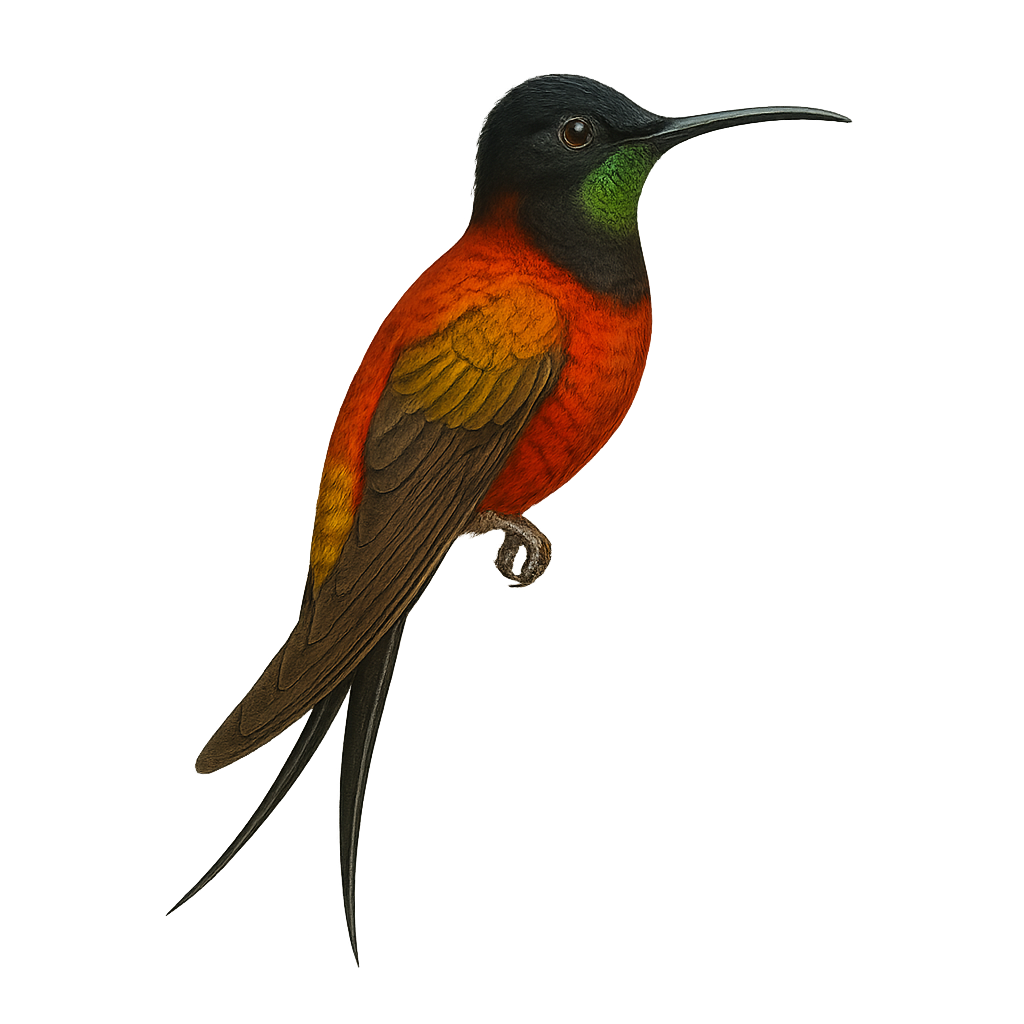Your wildlife photography guide.
Explore the crimson topaz in detail, study its behavior, prepare your shots.
Where to observe and photograph the crimson topaz in the wild
Learn where and when to spot the crimson topaz in the wild, how to identify the species based on distinctive features, and what natural environments it inhabits. The WildlifePhotographer app offers tailored photography tips that reflect the crimson topaz’s behavior, helping you capture better wildlife images. Explore the full species profile for key information including description, habitat, active periods, and approach techniques.
Crimson Topaz
Scientific name: Topaza pyra

IUCN Status: Least Concern
Family: TROCHILIDAE
Group: Birds
Sensitivity to human approach: Suspicious
Minimum approach distance: 5 m
Courtship display: November to December
Incubation: 15-17 jours
Hatchings: November to January
Habitat:
Tropical forests, forest edges, wetlands
Activity period :
Primarily active during the day, with peak activity in the morning and late afternoon.
Identification and description:
The Crimson Topaz, or Topaza pyra, is a captivating bird found in the tropical forests of South America, particularly in Guyana, Brazil, and Venezuela. This hummingbird is known for its striking plumage, featuring shades of red, orange, and metallic green. Males have long, forked tails that enhance their elegance during courtship displays. They primarily feed on nectar but also consume small insects to supplement their diet. Their rapid and agile flight allows them to move easily between flowers. Although their habitat is relatively stable, deforestation poses a potential threat to their survival.
Recommended lens:
400 mm – adjust based on distance, desired framing (portrait or habitat), and approach conditions.
Photography tips:
To photograph the Crimson Topaz, it is advisable to use a 400mm lens or longer to capture the details of its striking plumage without disturbing it. Opt for early morning hours to benefit from soft, natural light. Be patient and discreet, as these birds are suspicious. Set up near flowers they frequent to increase your chances of observing them. Use a tripod to stabilize your camera and achieve sharp images.
The WildlifePhotographer App is coming soon!
Be the first to explore the best nature spots, track rutting seasons, log your observations, and observe more wildlife.
Already 1 431 wildlife lovers subscribed worldwide

